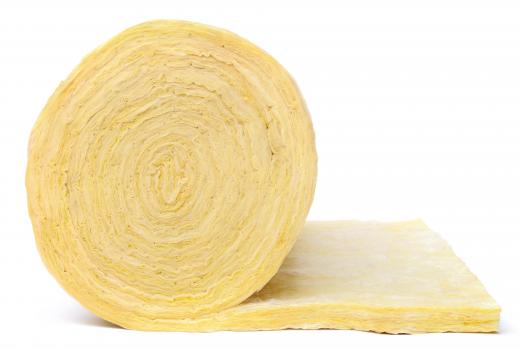Mineral wool is an industrial product available for use in insulation and fire stops. It is produced artificially with the use of molten rock or furnace slag that can be spun to create a dense, wooly material that may be treated in a variety of ways for different uses. It comes in a loose fill format as well as a blanket style, allowing technicians to cut blankets to size for insulation; molded products for pipes and other objects are also available. Manufacturers may be able to produce custom components on request from customers, depending on the nature of a project.
This product has a number of properties that make it useful for insulation. It is fire resistant, and may be installed for fireproofing or to create fire resistant barriers in structures that contain flammable materials and other fire hazards. It also blocks sound and can be used to make sound booths or to limit noise from a factory floor. Mineral wool insulation can also be useful for differential temperature control in buildings where different environments may have their own heating and cooling needs.

Loose fill can be blown or piped into walls and other structures to create insulation. Batting can be installed like other forms of sheet insulation, and can also be wrapped around objects of interest like chemical tanks. Molded forms of mineral wool can be snapped over pipes and other objects to create a snug insulating barrier to limit heat loss or transfer, depending on the setting.

Home improvement stores may sell mineral wool and can also order it for specific applications. For industrial projects, contractors may order directly from manufacturers and wholesalers to cut costs. Companies that specialize in blow-in insulation and related products can obtain a range of mineral wool types for different applications, all rated in terms of the level of insulation and protection provided. This product can be used in new construction as well as retrofits and remodels, and meets insulation standards set by regional building codes.

Products derived from rock are known as rock or stone wool, while slag wall uses furnace slag as the raw material. Mineral wool is a potential irritant and needs to be handled with care. Protective garments, eye wear, and respirators should be worn while working with this product. Fibers can enter the skin, lungs, or eyes and create irritation and discomfort. Prolonged exposure may lead to chronic inflammation and other health care problems.
Ever since she began contributing to the site several years ago, Mary has embraced the exciting challenge of being a About Mechanics researcher and writer. Mary has a liberal arts degree from Goddard College and spends her free time reading, cooking, and exploring the great outdoors.

